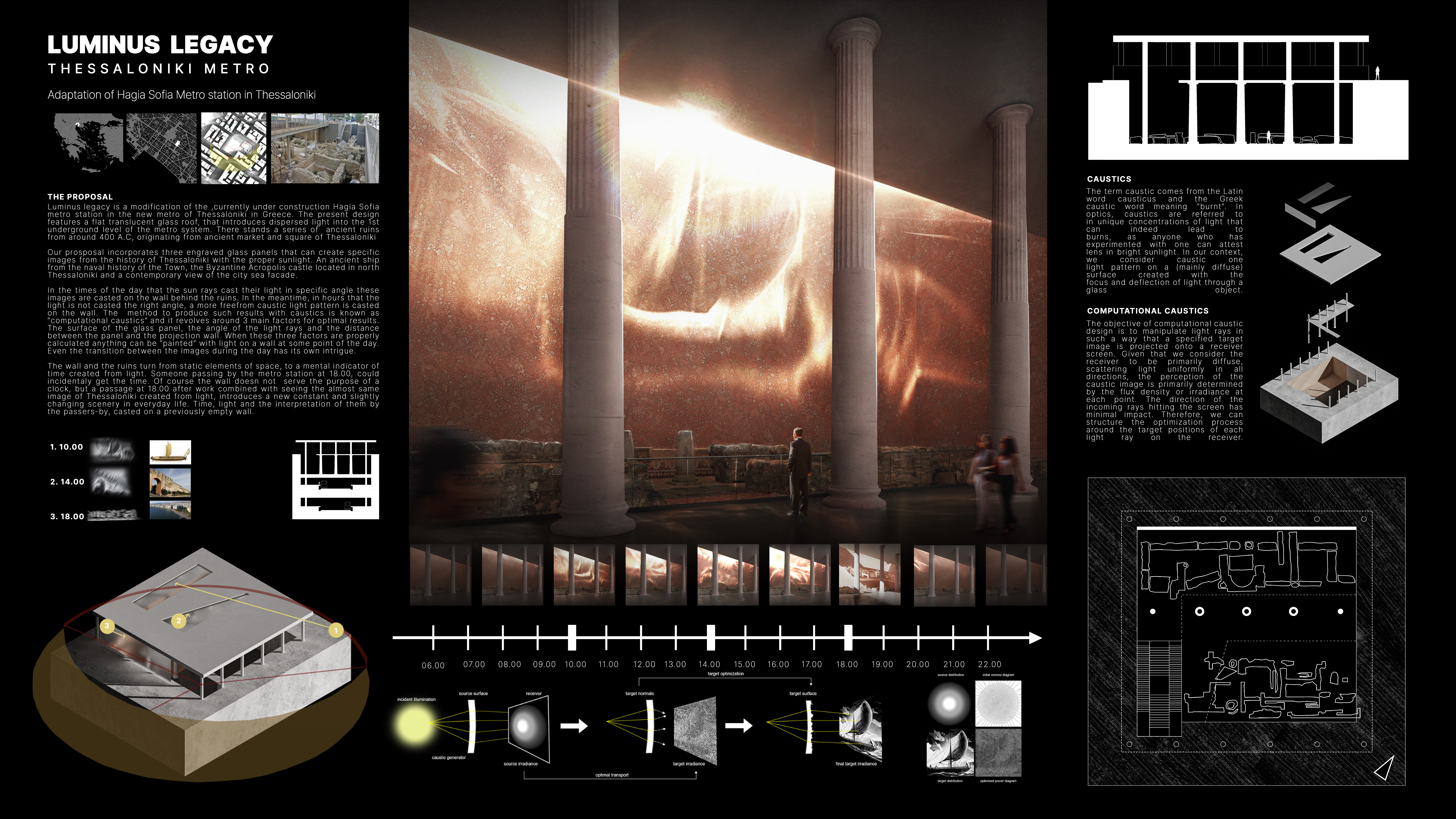2024 - Luminus Legacy

Category
Daylight in Buildings - Region 2: Eastern Europe and The Middle East
Students
Alexandros Broutian & Georgios Chasiotis
Teacher
Aris Tsangrassoulis
School
University of Thessaly
Country
Greece
Download
Download project board
Luminus legacy is a modification of the currently under construction Hagia Sofia metro station in the new metro of Thessaloniki in Greece. The present design features a flat translucent glass roof that introduces dispersed light into the 1st underground level of the metro system. There stands a series of ancient ruins from around 400 A.C., originating from the ancient market and square of Thessaloniki.
Our proposal incorporates three engraved glass panels that can create specific images from the history of Thessaloniki with the proper sunlight. An ancient ship from the naval history of the town, the Byzantine Acropolis castle located in north Thessaloniki, and a contemporary view of the city sea facade.
At times of the day when the sun rays cast their light at a specific angle, these images are cast on the wall behind the ruins. In the meantime, during hours when the light is not cast at the right angle, a more freeform caustic light pattern is cast on the wall. The method to produce such results with caustics is known as “computational caustics” and it revolves around three main factors for optimal results: the surface of the glass panel, the angle of the light rays, and the distance between the panel and the projection wall. When these three factors are properly calculated, anything can be “painted” with light on a wall at some point of the day. Even the transition between the images during the day has its own intrigue.
The wall and the ruins turn from static elements of space to a mental indicator of time created from light. Someone passing by the metro station at 18:00 could incidentally get the time. Of course, the wall does not serve the purpose of a clock, but a passage at 18:00 after work combined with seeing the almost same image of Thessaloniki created from light introduces a new constant and slightly changing scenery in everyday life. Time, light, and the interpretation of them by the passers-by are cast on a previously empty wall.

























